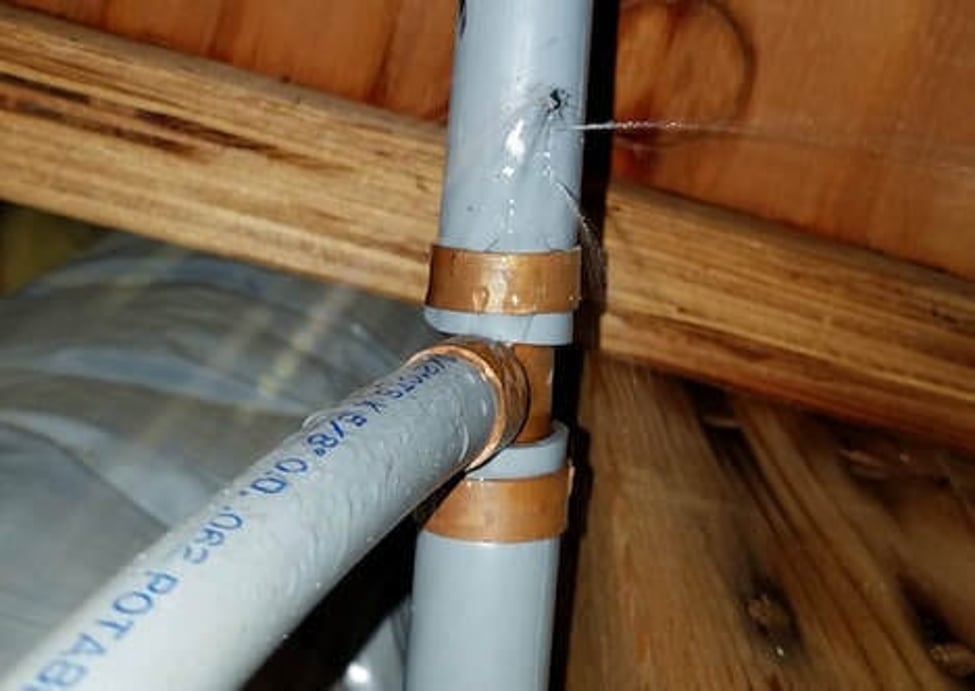In the world of residential real estate, it's all about the details. While we often focus on the aesthetics, the underlying systems like plumbing are equally important. Today, we're diving into the various types of plumbing lines in a residential home, namely Poly-b, PEX, Copper, Galvanized Steel, PVC, and ABS.
Polybutylene (Poly-b)
Polybutylene pipes, also known as Poly-b, were widely used from the late 1970s until the mid-1990s. They were popular due to their low cost and ease of installation. However, they are susceptible to failure, especially when exposed to chlorine in the water supply. This can lead to leaks and significant water damage. If you own a home built in this era, it may be worth considering a plumbing upgrade.
The presence of Poly-b plumbing can also influence your insurance premiums. Homes with these pipes are often seen as a higher risk, leading to increased insurance premiums. Moreover, most insurance policies will not cover the cost of replacing Poly-b pipes as they are considered a defect in the home.
In some cases, homeowners have found it challenging to get property insurance due to the Poly-b plumbing in their house. Therefore, homeowners must consider the type of plumbing installed in their homes, as it can have a significant impact on their insurance coverage and costs.
PEX (Cross-Linked Polyethylene)
PEX is a type of flexible plastic tubing that has gained popularity in recent years for its affordability, flexibility, and durability. It's resistant to scale and chlorine, doesn't corrode or develop pinhole leaks, and can withstand high temperatures. Additionally, PEX is faster to install than copper or PVC pipes, making it a popular choice for modern plumbing systems.
Copper
Copper plumbing has been the gold standard for decades. It's durable, reliable, and has a long lifespan. Moreover, copper pipes are resistant to bacteria and heat, making them ideal for hot water supply lines. However, they are more expensive and require skilled labor for installation. Copper can also corrode if the pH of the water is too acidic or too basic.
Galvanized Steel
Galvanized steel pipes were commonly used in homes built before the 1960s. These pipes are coated with a layer of zinc to prevent rusting. However, over time, the zinc can erode, leading to rust and reduced water pressure. Like Poly-b, if your home still has galvanized pipes, consider replacing them to prevent potential issues.
PVC (Polyvinyl Chloride) and ABS (Acrylonitrile Butadiene Styrene)
PVC and ABS are both types of plastic pipes. PVC is typically used for cold water systems and drain lines, while ABS is primarily used for drain, waste, and vent pipes. Both are easy to work with and resistant to corrosion and scale. However, they can't handle high temperatures and aren't suitable for hot water supply lines.
In conclusion, the type of plumbing in a residential home can significantly impact its functionality and value. While newer materials like PEX offer many advantages, traditional materials like copper continue to be reliable choices. Regardless of the type of plumbing, regular maintenance is crucial to prevent leaks and other issues. Always consult with a professional plumber when considering a plumbing upgrade or repair to ensure the job is done correctly and safely.
Remember, understanding the nuances of your home's infrastructure is not just beneficial for maintenance—it's a selling point, too. Whether you're buying, selling, or simply maintaining, knowing your plumbing lines is a key piece of the real estate puzzle.
.png)
